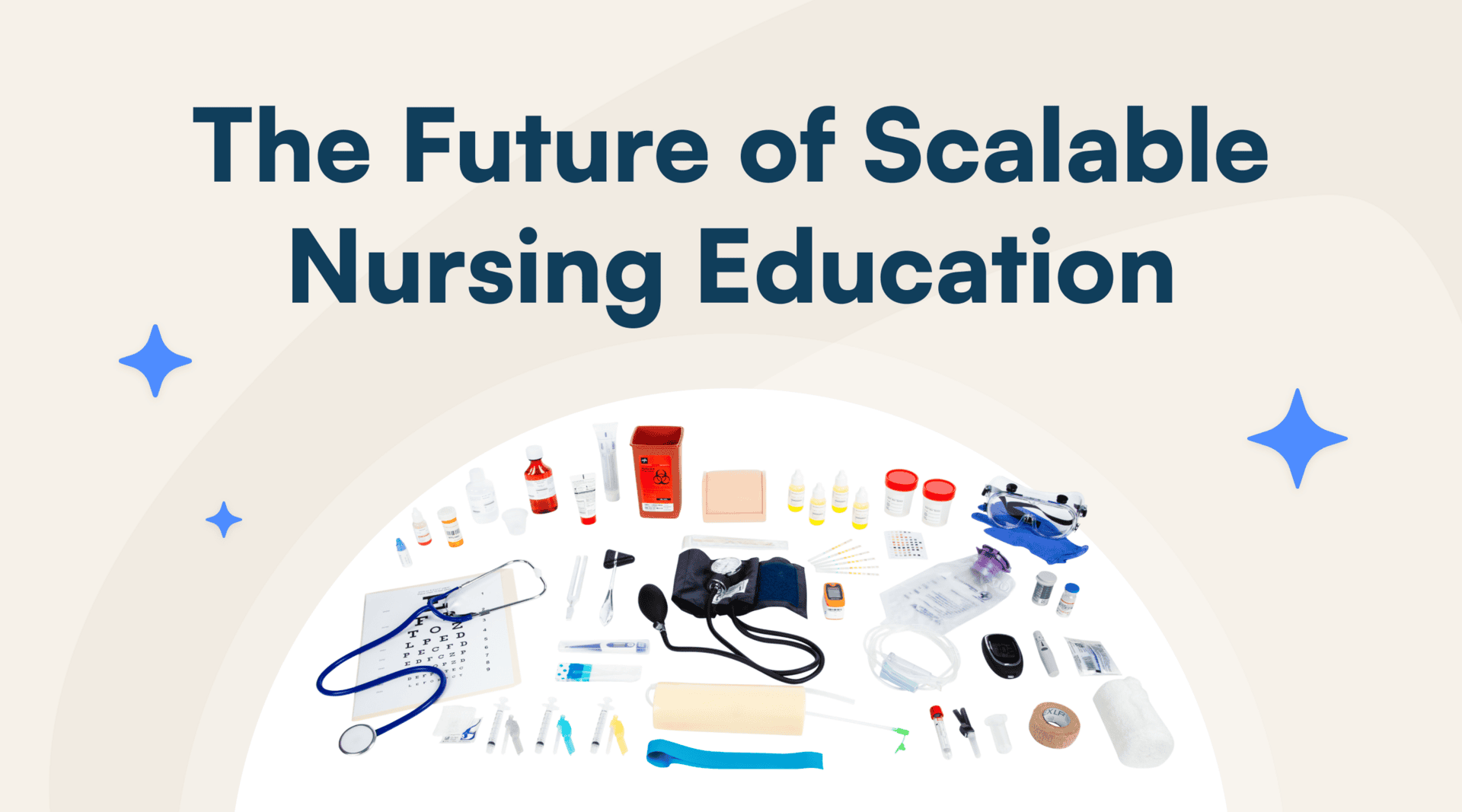In an era where technology drives innovation, online education has emerged as a powerful tool, breaking down barriers and transcending geographical boundaries. Nowhere is this more evident than in the world of science education, which presents unique challenges given its emphasis on experimentation and inherently rigorous subject matter.
Texas, with its rich academic landscape, is at the forefront of this transformation, and even ranks no.14 for most innovative states as of March 2024. “These states also instill young students with the skills they need to succeed in the current workforce, skills which are useful whether or not they pursue a STEM career,” writes a WalletHub Analyst.
So, what sets Texas apart? And what can other community colleges take note of?
The community college advantage and challenge
Community colleges, especially in Texas, are the bedrock of opportunity by offering accessible and flexible avenues to higher education for traditional and non-traditional students alike. In fact, according to the American Association of Community Colleges (AACC) …
- 66% of community college students are attending part-time
- 32% are the first generation to attend college
- 13% are single parents
- 23% are students with disabilities
- The average age at community colleges is 27 (excluding dual enrollment students).
Although Texas’ 50 community college districts contribute nearly $10 billion to the state’s economy and support nearly 78,000 jobs, the challenges they confront are universal…
- Low or decreasing enrollment
- Low or decreasing retention and completion rates
- Transfer and articulation challenges
- Workforce relevance
- Financial constraints
- Equity gaps
- Scaling technology integration
Texas is the second largest state in the nation, meaning these challenges are supersized. So, innovative and scalable solutions are required to ensure student success.
The Texas Blueprint for Success
Under the Talent-Strong Texas Plan, Texas has set out for “at least 60% of [their] entire working-age population to have a credential beyond a high school diploma by 2030,” taking into consideration “all Texans who want to pursue higher education, even when they don’t fit the traditional student profile.”
But exactly how are they doing it?
Focus on credentials of value
The passage of House Bill 8 codified a new model to fund community colleges in Texas that rewards colleges for awarding degrees, certificates, and other “credentials of value.”
When determining a credential of value, the Community College Formula Funding outlines 25 in-demand fields in Texas where entry requires education, such as…
- Biological and Physical Sciences
- Environmental/Natural Resources Management
- Allied Health and Medical Assisting Services
- Practical Nursing, Vocational Nursing and Nursing Assistants
Community colleges in Texas help equip students with foundational skills and knowledge for careers in target industry clusters like petrochemicals, healthcare, agriculture, energy, and biotechnology.
For students not majoring or pursuing careers in the sciences, scientific literacy is still essential to support critical thinking, problem-solving abilities, and showing students what careers and opportunities lay before them.
Cynthia Lawry, Professor of Geology at Lone Star College says, “You find a lot of young people saying that ‘college is not for me.’ Well, they have no idea the different occupations and possibilities that are out there. I love helping students re-think what’s possible and how they can help shape future generations and sustain our way of life.”
Confront enrollment challenges from all angles
Texas is finally seeing a trend towards enrollment recovery. Ray Martinez, Texas Community Colleges Association President and CEO, said he believes affordability is a driving factor in the recovery.
In an article from The Texas Tribune, he’s quoted saying, “I think a lot of students are assessing the value of having a post-secondary degree or certificate,” he said. “When they do that, they often look at what is the most affordable option, and the one that will give [them] the most return on value. That usually points toward a degree or certificate from a community college.”
Ensure quality to streamline transfer pathways
Transfer opportunities are an important recruitment tool that also supports enrollment, student retention, and student success.
But science courses are often more scrutinized when transferring credits between community colleges, dual enrollment programs, and universities for several reasons.
- Rigor and standards: Science courses have high standards and specific content.
- Lab components: Colleges struggle to deliver hands-on labs to distance learners.
- Accreditation: Differences in accreditation raise quality and relevance concerns.
- Curriculum alignment: Courses must align with university requirements.
- Preparation for advanced courses: The right foundational knowledge is crucial for student success.
Professor Lawry—who also serves on the curriculum committee at Lone Star College— says they adopt certain courses that students will need to get a four-year degree. “My position here at a junior college is a passion because I want to prepare individuals for the rigor that they’re going to experience,” she says.
She is especially mindful of preparing her online students who don’t participate in the traditional in-person lab experience. In partnership with Science Interactive, Professor Lawry provides hands-on lab experiences that are comparable to on-campus courses to ensure online students are well-prepared to proceed in their field of study.
Embrace dual credit enrollment directives
Dual credit enrollment also serves as a critical link between enrollment challenges and transfer pathways for community colleges. With a renewed focus on dual credit enrollment under House Bill 8, high school students can enroll in college-level courses, ultimately…
- Expanding the pool of prospective students for community colleges, addressing enrollment challenges and boosting student numbers.
- Enhancing the transferability of credits and ensuring students can progress towards their educational goals in a more affordable way, without losing credits.
- Exposing students early to college-level coursework and the expectations of higher education, likely increasing student retention and completion rates.
Optimize costs to navigate funding constraints
Texas has one of the more affordable community college systems. According to the Education Data Initiative, Texas is the sixth-least expensive for in-state students as of October 2023.
What are they doing to keep costs down?
- Expanding dual enrollment programs: Tap into high school partnerships to increase student enrollment, leveraging existing resources effectively.
- Embracing distance education: Cut overhead costs and attract a wider student base by investing in online infrastructure and quality resources.
- Ensuring financial aid options: Alleviate financial barriers for underserved communities with targeted aid, ensuring access to education for all.
Expand access through distance education
Community colleges in Texas must navigate the logistical challenges of serving students across expansive rural areas and densely populated areas, which can create an unsustainable strain on resources.
Distance education helps maximize classroom and lab space, keep costs low, and expand access to higher education for more students, reinforcing the viability and efficacy of your college.
Jennifer Baggett, PhD and Professor of Biology at Dallas College saw the impact of distance education firsthand while working on a project funded by the Virtual College of Texas, supporting small colleges in rural areas without the infrastructure to develop online courses, but who wanted to give more students in rural Texas the opportunity to get a quality hands-on lab experience.
She led a committee of faculty to coordinate the best lab kit, determine the best content structure, and outline the course design for non-major students. After evaluating Carolina Distance Learning labs, they partnered with Science Interactive because the lab kits best helped them cater to their diverse student body and provide a quality science lab experience regardless of whether students could attend college on campus.
After its completion, the course was distributed and free to use for 2-year colleges throughout the state.
Then, when the COVID-19 pandemic hit, she used an editable version of that same course as a starting point to work with her fellow faculty to develop content to help themselves and numerous adjunct instructors move their courses online, requiring just a few modifications to ensure rigor for majors students—and with the help of Science Interactive lab kits.
“My goal has always been to grow this partnership with Science Interactive among both majors and non-majors faculty. It’s a high-quality hands-on experience for students and easy for faculty to adopt it at our college” says Dr. Baggett.
Distance learning offers accessibility, flexibility, cost-effectiveness, caters to diverse learning needs, and demonstrates our ability to adapt and evolve—from a pandemic to changing student demands.
Practical tips for getting started?
As Texas community colleges forge ahead in their commitment to student success and innovation, their strategies offer valuable insights for institutions nationwide. From confronting enrollment challenges to ensuring quality in online learning experiences, their efforts exemplify resilience and adaptability in the face of evolving educational landscapes. As we navigate this dynamic terrain, it’s imperative to draw inspiration from their experiences.
Take it one step further with 5 Actionable Tips for Teaching Online Science in Texas, where we delve into practical advice directly from Texas instructors. Let’s collaborate to elevate learning outcomes for students across the state and beyond, shaping the future of higher education together.
Discover more articles

Science Interactive Launches New Nursing Fundamentals

What Clinical-Ready Actually Looks Like (And How to Get There Sooner)


